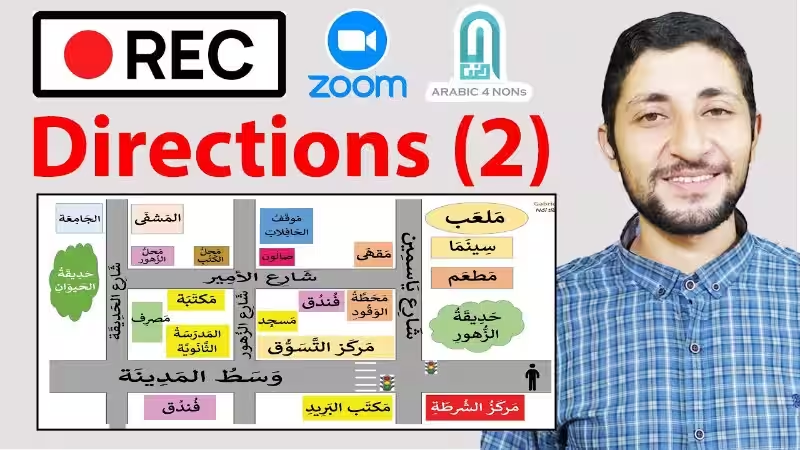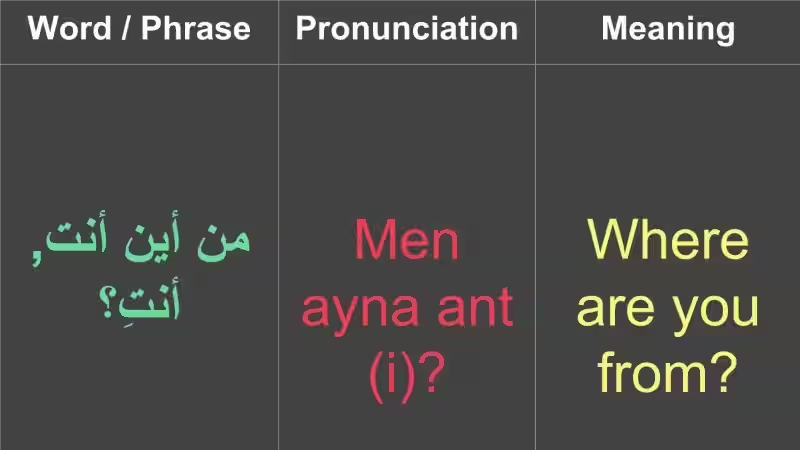
Learning Arabic can be a rewarding journey, opening doors to a rich culture and diverse world. Mastering basic phrases like “where are you?” is crucial for everyday communication. This guide explores different ways to express this common question in Arabic, considering gender, formality, and context.
The Basics: “Ayna Anta?”
The most fundamental way to ask “where are you?” in Arabic is “Ayna anta?” (pronounced “ay-na an-ta”). This phrase is used when addressing a male individual. It’s a simple, direct question that gets the point across efficiently.
For instance, imagine you’re looking for a friend in a bustling marketplace. You might call out, “Ayna anta?” to get their attention and learn their location.
Gender Variations: Respecting the Nuances of Arabic
Arabic is a gendered language, meaning that words and phrases change depending on the gender of the person being addressed. This applies to “where are you?” as well. Here’s a breakdown:
Speaking to a Female: “Ayna Anti?”
When asking a female where she is, you would use “Ayna anti?” (pronounced “ay-na an-tee”). This slight change in the pronoun reflects the grammatical structure of Arabic.
Imagine you’re at a party and are trying to locate a female friend. You could ask, “Ayna anti?” to find out her whereabouts.
Addressing Two or More People: The Plural Forms
The phrase also changes when addressing multiple individuals. Here’s how it works:
- “Ayna antuma?” (pronounced “ay-na an-tu-ma”) is used for two males.
- “Ayna antunna?” (pronounced “ay-na an-tun-na”) is used for two females.
- “Ayna antum?” (pronounced “ay-na an-tum”) is used for a group of males.
- “Ayna antunna?” (pronounced “ay-na an-tun-na”) is used for a group of females.
- “Ayna antum?” (pronounced “ay-na an-tum”) is used for a mixed group of males and females.
Let’s say you’re trying to find your family members at a crowded event. You could use “Ayna antum?” to ask where they are, regardless of their individual gender.
Formal and Informal Variations: Adjusting for the Situation
The level of formality in a conversation also influences the phrase used.
Formal: “Ayna Tukuun?”
“Ayna tukuun?” (pronounced “ay-na tu-koon”) is a slightly more formal way to ask “where are you?” It’s appropriate for most situations, especially when interacting with someone you don’t know well or in a professional setting.
Imagine you’re attending a business meeting and need to find a colleague. You could use “Ayna tukuun?” to politely inquire about their location.
Informal: “Waintak?”
“Waintak?” (pronounced “wayn-tak”) is a more informal and colloquial way to ask “where are you?” It’s commonly used among friends and family.
Think about texting your close friend to ask where they are. You could simply send, “Waintak?” for a quick and casual inquiry.
Contextual Considerations: Beyond the Basics
The specific context of the question can also affect the phrase used. Here are some examples:
Asking about Destination: “Ayna Inta Raa’ih?”
“Ayna inta raa’ih?” (pronounced “ay-na in-ta raa-ih”) means “where are you going?” This phrase is used when you want to know someone’s destination.
Imagine you’re at a bus stop and see a friend. You could ask, “Ayna inta raa’ih?” to find out where they’re headed.
Asking about Past Location: “Ayna Inta Kaan?”
“Ayna inta kaan?” (pronounced “ay-na in-ta kaan”) means “where were you?” This phrase is used to inquire about someone’s past location.
Think about asking your friend about their weekend. You could ask, “Ayna inta kaan?” to find out where they spent their time.
Additional Notes: Understanding the Building Blocks
Understanding the individual words that make up these phrases can help you grasp their meaning.
- “Aayna” (pronounced “ay-na”) means “where.”
- “Inta” (pronounced “in-ta”) means “you” in the masculine singular form.
- “Anti” (pronounced “an-tee”) means “you” in the feminine singular form.
- “Tukuun” (pronounced “tu-koon”) means “to be” or “to be located.”
By breaking down these phrases into their constituent parts, you can better understand their meaning and structure.
Example Sentences: Putting It All Together
Here are some example sentences illustrating how to use these phrases in different contexts:
- “Ayna anta?” (Where are you?)
- “Ayna anti?” (Where are you?)
- “Ayna tukuun?” (Where are you located?)
- “Waintak?” (Where are you?)
- “Ayna inta raa’ih?” (Where are you going?)
- “Ayna inta kaan?” (Where were you?)
By mastering these different variations, you’ll be equipped to communicate effectively in Arabic, regardless of the context or gender of the person you’re addressing. Remember, practice and exposure to the language are key to fluency. So, embrace the journey, and enjoy the beauty and richness of the Arabic language!
Frequently Asked Questions about “Where Are You?” in Arabic
How do I say “Where are you?” in Arabic?
The basic phrase is “Ayna anta?” for a male and “Ayna anti?” for a female.
What if I’m talking to more than one person?
Use “Ayna antuma?” for two males, “Ayna antunna?” for two females, “Ayna antum?” for a group of males, and “Ayna antunna?” for a group of females. Use “Ayna antum?” for a mixed group.
Are there more formal ways to say it?
Yes, “Ayna tukuun?” is a more formal option.
What about a more casual way?
“Waintak?” is a colloquial way to ask “Where are you?”
How do I ask “Where are you going?” and “Where were you?” in Arabic?
“Ayna inta raa’ih?” means “Where are you going?” and “Ayna inta kaan?” means “Where were you?”
- Use “Ayna anta?” for a male and “Ayna anti?” for a female.
- Adjust the phrase based on the number of people you are addressing (e.g., “Ayna antuma?” for two males).
- Consider formality: “Ayna tukuun?” is more formal, “Waintak?” is informal.
- Specify your intention: “Ayna inta raa’ih?” means “Where are you going?”, “Ayna inta kaan?” means “Where were you?”.








